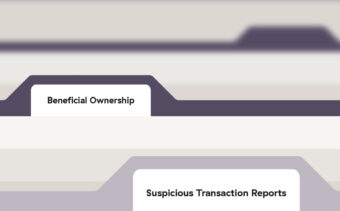
The money remittance industry is growing. In 2018, global remittances reached $689 billion: a figure that is expected to reach $746 billion in 2020. The trend is driven, in part, by digital remittance services, which are expected to see a […]

The money remittance industry is growing. In 2018, global remittances reached $689 billion: a figure that is expected to reach $746 billion in 2020. The trend is driven, in part, by digital remittance services, which are expected to see a […]

Foreign currency exchange (FX) is a popular methodology for money launderers, who seek to exploit a range of vulnerabilities associated with the service. The growing volume of FX businesses across the banking and commercial sectors, on Main Streets and online, […]

Banks and other financial institutions (FIs) must implement an anti-money laundering (AML) compliance program to detect and prevent money laundering and terrorism financing activities and satisfy their associated regulatory obligations. Given the administrative burden and the need to manage their […]

Canada has a history of underperformance with respect to following Anti-Money Laundering (AML) and Anti-Terrorist Financing (ATF) best practices, but the country has consistently improved to close the gap. Based on the findings of FATF’s most recent mutual evaluation, it […]

The Philippines is one of the Asia Pacific (APAC) region’s most prominent business destinations and a global hotspot for FinTech and financial services. Ranked as one of Southeast Asia’s favored investment destinations, the Philippines attracted over USD2.44 billion of foreign […]

Technology, regulation and the future of financial crimeIn our annual industry report here at ComplyAdvantage, we explore how technology and politics are set to shape financial crime compliance. We identify key AML Compliance trends and issues you need to watch out for in 2020.

When compliance teams are designing a customer onboarding journey, firms have to balance their regulatory requirements against budgets, resources, and customer service needs. To do this, businesses should understand their responsibilities during onboarding and the technology tools available to enhance […]

Transaction monitoring can be a challenging compliance obligation: firms must collect and analyze large amounts of customer data to spot potential money laundering activities promptly and accurately. In practice, transaction monitoring involves scrutinizing customer accounts for a range of indicators, […]

Executive Summary We live in an age of crises; ensuring business continuity is no longer a ‘nice to have’ for any firm. It is essential. Financial Institutions in particular are always highly sensitive to the economic disruptions brought by crisis. […]

PEPs and Life Insurance Policies: Things You Should Be Aware Of A politically exposed person (PEP) is an individual with a high profile political role, or who has been entrusted with a prominent public function. They present a higher risk […]

Following the succession of five previous anti-money laundering directives (AMLDs), the 6th Money Laundering Directive reinforces the foundations of the European Union’s anti-money laundering and combatting the financing of terrorism (AML/CFT) framework. The first AMLD came into force in 1991 […]

Guide to money laundering in Dubai, and the importance of Dubai Financial Services Authority (DFSA) One of the most important financial hubs in the United Arab Emirates and the Middle East, Dubai hosts a range of international business interests in […]